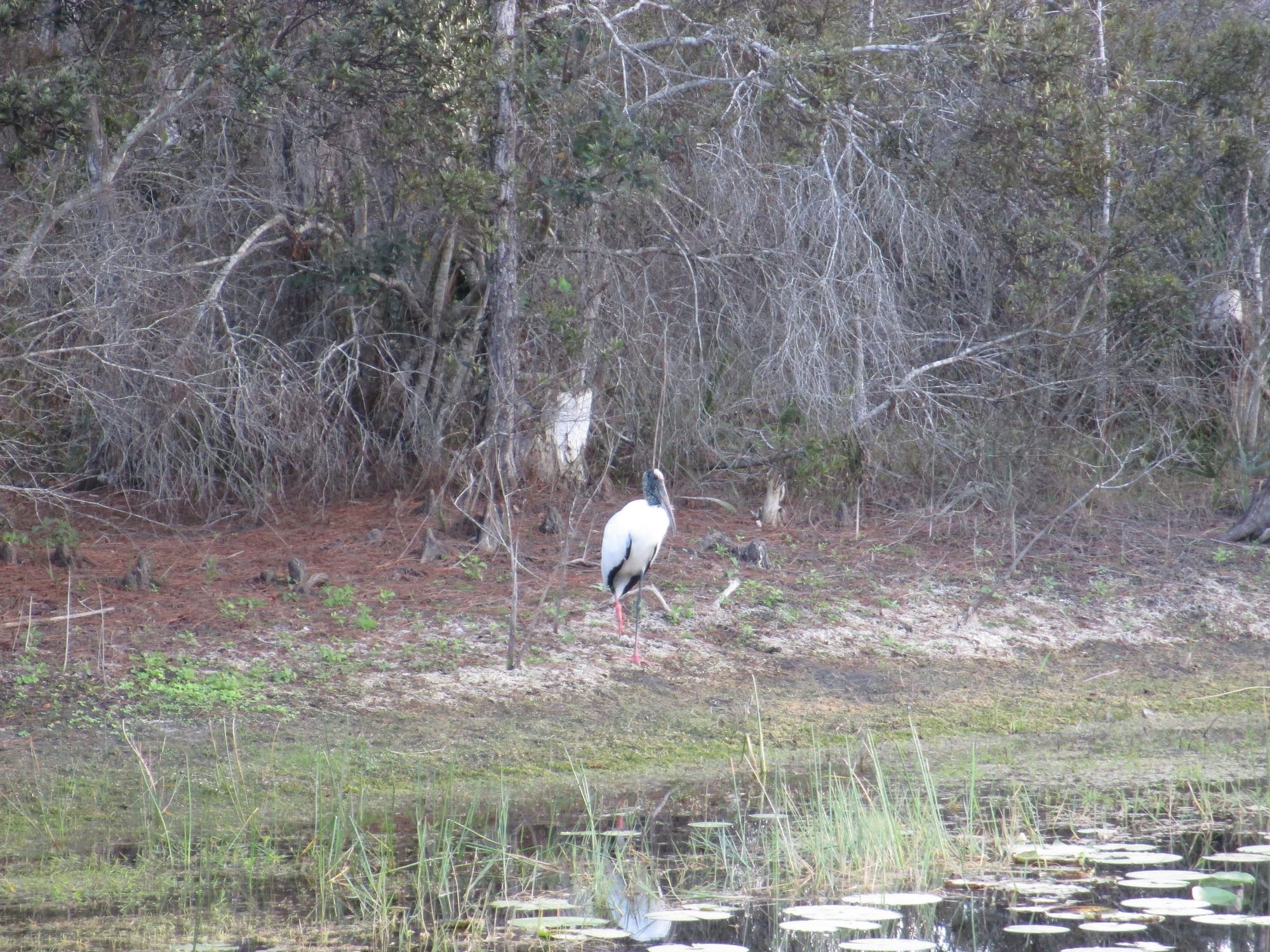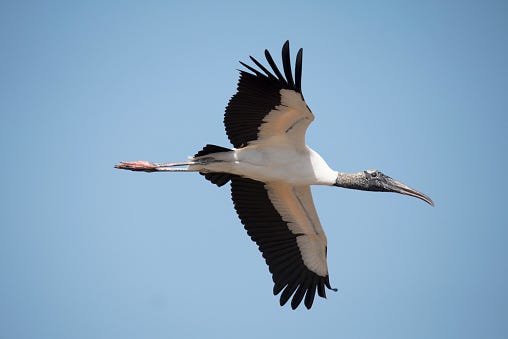
What is your first reaction to the bird in that picture? For many people, it might be that it looks very odd. With its bald head and pink feet, it probably wouldn’t win any traditional beauty contests. This is a wood stork, Mycteria americana. Juvenile individuals still have some fluff on their heads, but by the time they reach adulthood, there are no longer any feathers above the neck. The wrinkled skin gives it a unique look, one that most would not consider pretty. However, let’s look closer and see if we can’t find some unexpected beauty.

In the first picture, you can see some black feathers, but you don’t get the full effect until you see a wood stork take flight. The black wing bands are even more distinctive because of the stork’s large wingspan (up to 70 inches). These birds travel long distances from their roost to find foraging locations. In order to conserve energy, they glide using rising currents of hot air called thermals. The first time I saw a flying wood stork, I was amazed by how beautiful I found the wing color patterns to be. As you look at nature, remember that even the ugliest animal can hide something pleasant in appearance. However, looks aren’t the only beautiful things to be found. Let’s dig a little deeper into this bird’s behavior.
I have been fortunate enough to witness this behavior for myself. The stork is not an ambush hunter like herons or egrets. Instead, it sweeps its bill through the water feeling for prey items using tiny hairs and then snaps its bill closed. Sometimes, as the video shows, a stork will also use a wing to create shade. Because it feeds through touch and not sight, this is likely way of attracting prey items towards it. This is the kind of beauty I mean when I talk about unexpected places. Part of the reason I want to share these stories is to help others be able to see these things too.
How about another example? This time, an animal from my field work.

The leatherback sea turtle, Dermochelys coriacea, is the largest living species of turtle. I’ve got plenty of stories to tell about these fascinating creatures, but for now let’s take a look at their appearance. At first glance, the leatherback got the short end of the stick in the looks department, even when comparing it just to other sea turtles. It is a fairly drab, dark olive color, to the point where most people wouldn’t look at it twice if it weren’t for its size. However, if you get the chance to take a close look at a leatherback, you notice that this coloration is only part of its appearance.

This is a great picture for showing the white spots that cover this turtles body, including its head, shell, and all four flippers. I personally find these very fetching, especially the ones on the shell when they are reflecting the light from a full moon. But what if we go beyond their looks?
Taking on the jellies. You got serious thrill issues, dude.
For those who loved Finding Nemo, you might remember that line from Crush the sea turtle about Marlin’s encounter with a large forest of jellyfish. Clearly, however, Crush never met a leatherback.
That video shows some of the gracefulness I mentioned with my post about Myrtle. Because of their flippers, sea turtles are ungainly on land, but all the more graceful underwater. Add that to the fact that the turtles in the video are swimming through and munching on a cloud of animals that most people would avoid at all costs to prevent a nasty sting, makes their feeding behavior all the more beautiful. By the end of the video, did you care that the turtles weren’t brightly colored? Or that their faces look a bit dopey? I hope not.
These two species are personal examples for me of finding unexpected natural beauty. However, I understand that everyone has a different aesthetic. The things I find beautiful and moving may not always do the same for you, but I hope that what these examples provide is a template for your own search for the unexpected beauty in nature. Think about what animals and plants you like the most. Ask yourself why you like them. Take a look at them with fresh eyes. You may find new things to enjoy about them that you never expected.
For next time, a discussion of nature, what it means to me, and what I would like it to mean for you.